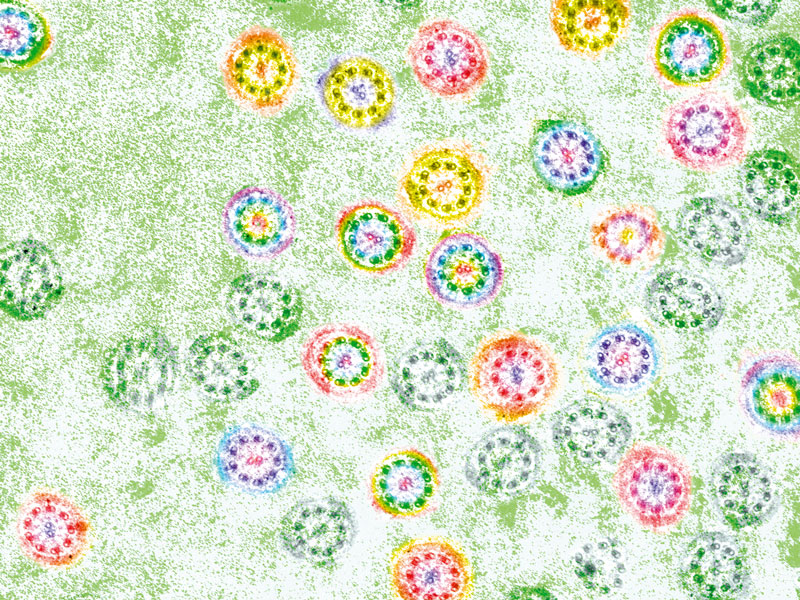Picture release: Spring tails
Cross-section of sperm tails from a healthy mouse, pictured using an electron microscope

As spring arrives, flowers seem to bloom everywhere – even under the microscopes at the European Molecular Biology Laboratory (EMBL) in Heidelberg, Germany. But the ‘flowers’ in this picture actually help an animal, not a plant, to pass on its genes. The image, which has been false-coloured for artistic effect, shows a slice through the tails of mouse sperm. Each ‘flower’ is the tail that a sperm cell wags to swim. Inside it, you can glimpse the secret behind sperm’s typical swimming technique: two tubes called microtubules, surrounded by a ring of nine other microtubule pairs. With the help of specialist ‘motor’ proteins, these microtubules make the sperm tail beat, enabling the sperm to swim.
The image was taken using an electron microscope, and shows sperm tails from a healthy mouse, magnified 46 000 times. While comparing sperm formation in healthy and genetically altered mice, Charlotta Funaya, a research technician at EMBL, was struck by the image’s beauty. “This particular image didn’t really serve a scientific purpose,” she says: “I took it because it looked pretty.”
Download high-resolution (tiff; magnified 210 000 times)
More information
The image was originally taken (in black and white) while studying how sperm cells protect their genome from DNA sequences known as ‘jumping genes’, as part of work published by Ramesh Pillai from EMBL Grenoble and colleagues in Nature last year. DOI: 10.1038/nature10672.
It was false-coloured for artistic effect by graphic designer Petra Riedinger at EMBL Heidelberg.



